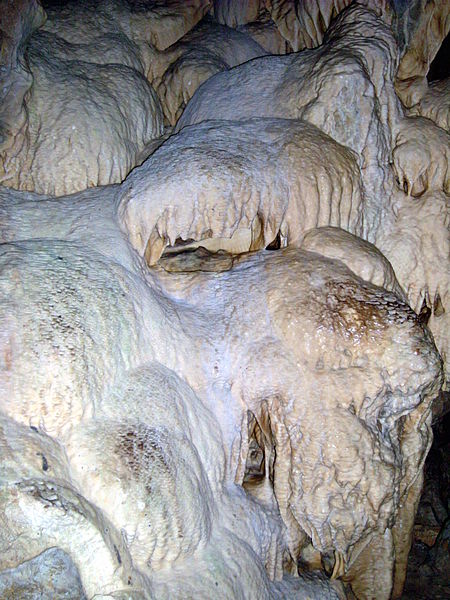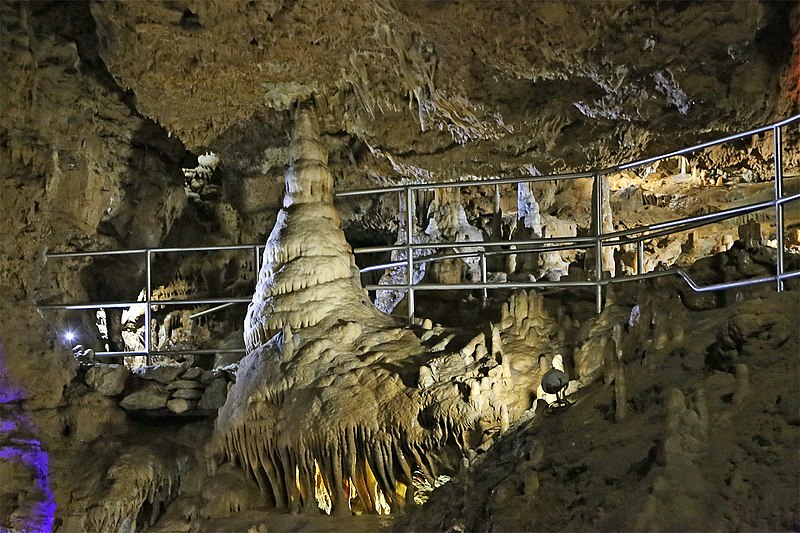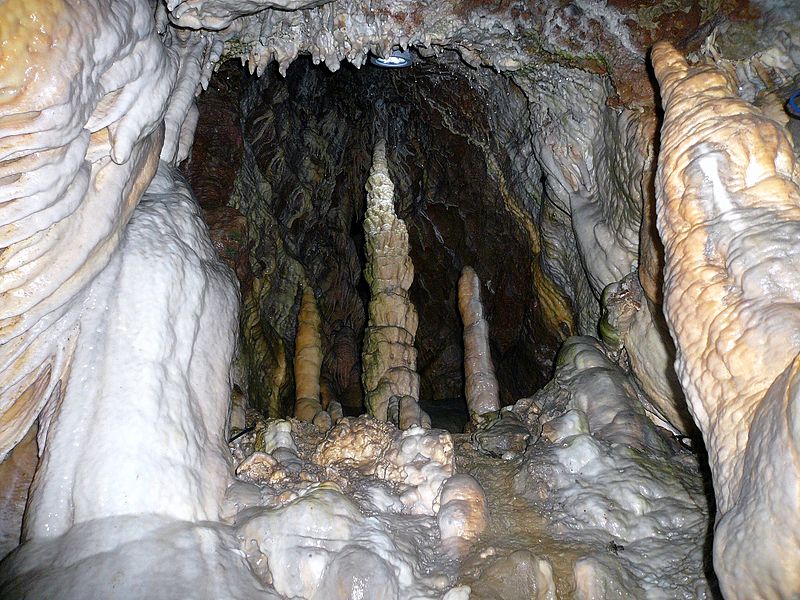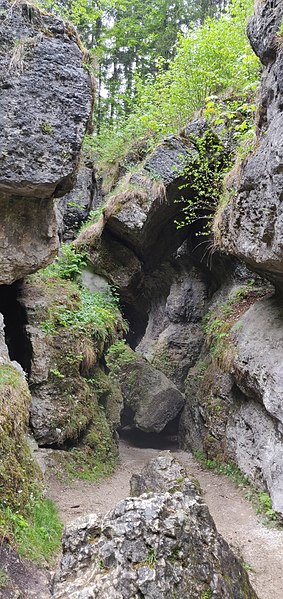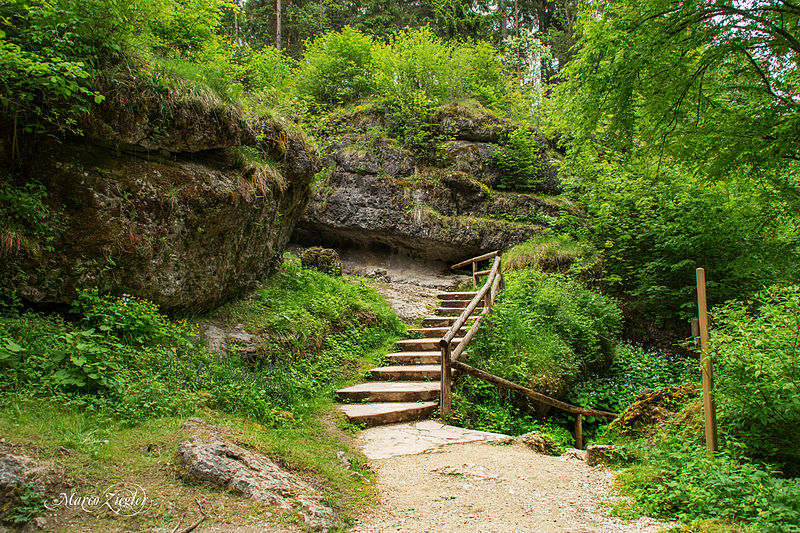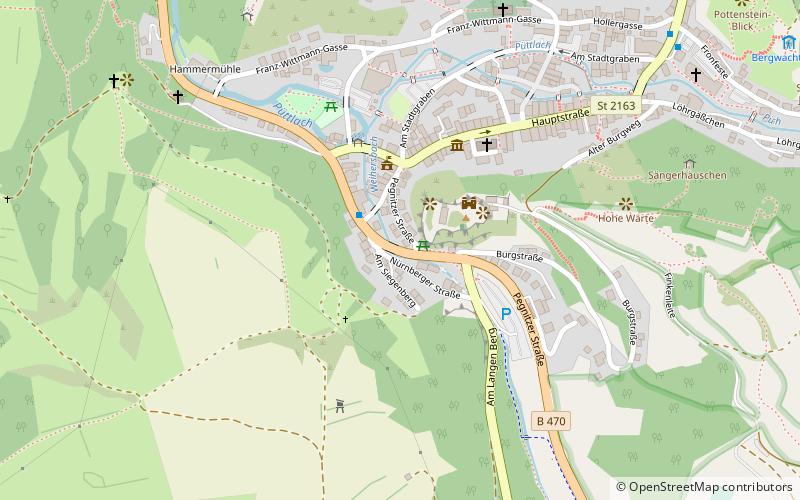Teufelshöhle, Pottenstein
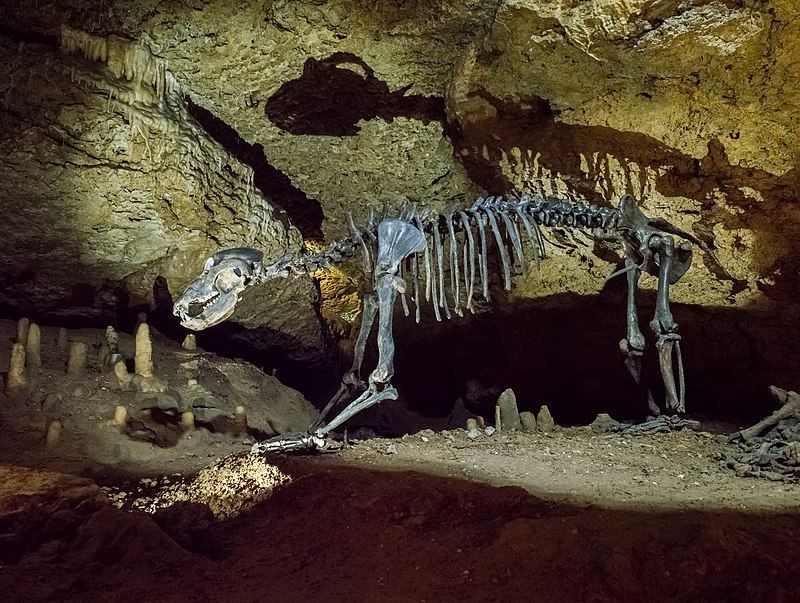
Facts and practical information
Nestled in the picturesque landscape of Pottenstein, Germany, the Teufelshöhle, or Devil's Cave, beckons adventurers and nature enthusiasts alike. This subterranean marvel is one of the largest and most visited caves in Germany, offering a fascinating journey into the depths of the earth.
The Teufelshöhle was discovered in 1922 and has since been a magnet for tourists seeking to explore its impressive limestone formations, stalactites, and stalagmites. The cave system stretches over a length of approximately 1,500 meters, though only a portion is accessible to the public. The guided tours available provide a safe and informative experience, allowing visitors to delve into the cave's history and geology.
Inside, the cave maintains a constant temperature of around 8 degrees Celsius, creating a cool respite during hot summer days. The tour paths are well-lit, showcasing the cave's natural beauty and highlighting its most spectacular features, such as the massive "Barbarossa" stalagmite and the ethereal "Fairy Grotto."
The Teufelshöhle is not only a natural wonder but also a site of paleontological significance. Fossilized bones of cave bears and other prehistoric animals have been found here, offering a glimpse into the distant past. These discoveries are displayed in the cave's exhibition area, adding an educational layer to the visit.
For the average tourist, the Teufelshöhle provides an unforgettable experience. It's a perfect day-trip destination for families, nature lovers, and anyone interested in the mysteries that lie beneath the earth's surface. The cave is typically open from March to November, and visitors are advised to wear warm clothing and sturdy footwear due to the cave's cool, damp conditions.
Teufelshöhle – popular in the area (distance from the attraction)
Nearby attractions include: Felsenbad, Gößweinstein Castle, Rabeneck, Tüchersfeld.


